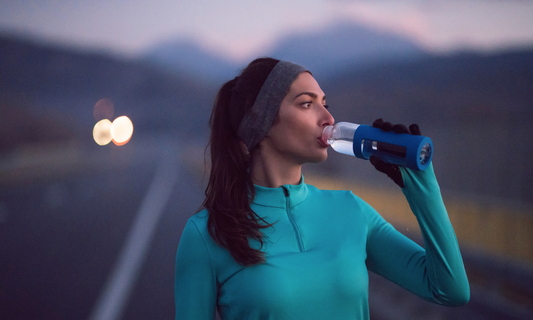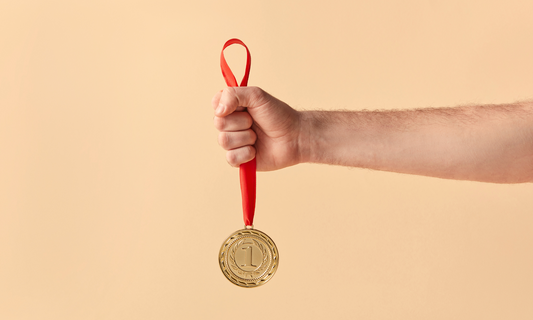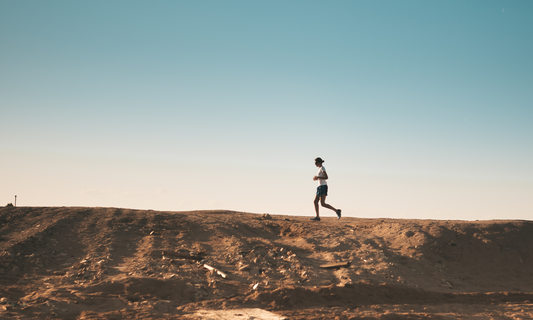How to prevent cramps and relieve them?

What is a cramp and how can I relieve it?
We've all felt that intense pain in a muscle, like a contraction, that wakes us up in the middle of the night or forces us to stop in the middle of a physical activity... in other words, cramps!
Cramps are a common problem that affects everyone, and are more common among the elderly, pregnant women, and athletes. Let's take a look at the causes and appropriate solutions.
In your opinion, what is the difference between a cramp and a sore muscle?
A cramp is characterized by intense pain in a muscle that appears suddenly. The muscle is then painful, stiff, and contracted when palpated, making it difficult to move the affected limb. This corresponds to an involuntary, visible muscle contraction localized to a muscle. The cramp disappears after a few seconds to a few minutes, but a painful and sensitive spot may remain for several hours. [ Cramps ]
Cramps most often affect the muscles of the lower limbs: calves , back and front of the thighs , soles of the feet . [ Muscle Cramps ]
They should not be confused with muscle aches, which are also common muscle pains during sports. They occur a few hours or the next day after unusual exertion. Muscles become painful with the slightest movement and sensitive when touched. Muscle aches are small cracks in the muscles after intense or prolonged exertion. [Aches and Cramps]
Most often, cramps occur for no apparent reason, particularly at night (nocturnal cramps) and after physical exercise. Certain diseases or medications can trigger cramps (such as chronic kidney disease and hemodialysis sessions, hypothyroidism, and diabetes).
Night cramps wake you up and force you to stand, walk, and stretch the muscle. Elderly people and pregnant women are prone to this type of cramp.
Exercise-related cramps occur during exercise, when it is prolonged, intense, without preparation, or a few hours after the end of the exercise. [ Cramps ]
How to relieve cramps?
A cramp is painful, but it can be relieved with simple actions.
If you have a cramp:
-
Stop the activity that caused the cramp
-
Slowly stretch the muscle and massage: the goal is to activate the antagonist muscle to allow the muscle contraction to relax
-
In case of calf cramp, for example: stand facing a wall about 50 cm away from it and lean forward, leaning against the wall, keeping the sole of your foot on the ground. Hold this position for 10 seconds; you should feel a slight tension in your calf. Then release.
-
-
Rehydrate yourself
-
Stand up to relieve nighttime cramps and stretch the sore muscle
[ Exerciseassociated muscle cramps: Discussion on causes, prevention and treatment ]
Tips to prevent cramps
General advice:
-
As a preventative measure, drink plenty of water (1.5 L recommended/day) without waiting until you feel thirsty. Proper hydration before, during, and after exercise is essential.
-
Always keep a water bottle with you so you have water easily accessible no matter where you are!
-
Eat healthily and choose foods rich in magnesium (rice, nuts, almonds, bananas, whole grains, dried vegetables, etc.), especially if you are an athlete.
If you frequently experience cramps during exercise:
-
Prepare yourself with suitable training
-
Remember to warm up your muscles well before exercising: the warm-up must be gradual and adapted
-
Make sure to replace water and mineral losses during and after exercise, and use sports-specific drinks.
-
Do a stretching session for the muscles that worked the most and a relaxation session after the exercise
[ Muscle Cramps ]
If you are prone to nighttime cramps: stretch the muscles affected by cramps (calves, back of the thighs) before going to bed
If cramps become very frequent and are accompanied by other symptoms (fever, tremors, persistent pain), consider consulting your doctor.
Why do we get cramps?
During muscle contraction, muscle fibers contract due to an impulse sent by nerves, causing the muscle to shrink by 30 to 50 percent. A cramp occurs when the muscle does not relax and remains contracted.
The most affected muscles are the so-called bi-articular muscles, that is, those that cross two joints: these are the muscles of the calves, the back of the thigh and the front of the thigh. These muscles can easily find themselves in a shortened position during our movements, which makes them more prone to cramps. [ Muscle Cramps ]
There are still uncertainties regarding the mechanism by which cramps occur. However, it is known that they occur following an increase in the excitability of the nerve structures responsible for controlling muscles, leading to their involuntary and sudden contraction. Certain factors cause a disruption of the nerve control of the muscle.
This could be due to water and mineral imbalance in muscle cells, linked to dehydration or intensive physical activity leading to great fatigue.
Dehydration and cramps
Excessive sweating and a lack of minerals (chlorine, magnesium, sodium, potassium, and calcium) not compensated by fluid and mineral intake, alters the fluid balance in the body. This leads to increased pressure on nerve endings and will cause contractions around the nerve, thus altering its excitability and causing sudden muscle contraction.
This happens especially in cases of severe dehydration and significant sodium loss.
Muscle fatigue and cramps
If the required effort is too intense and the muscles lack preparation, muscular fatigue will alter the control of the nervous command, induce an abnormal neurological reflex and a tetanic contraction of the muscle.
Various factors could be at the origin of this reaction, in particular the increase in the intensity and duration of the effort, a lack of training, tired and damaged muscles, etc.
[ Exercise-associated muscle cramps (EAMC): literature review ]
The cause of cramps is therefore complex. Significant dehydration combined with muscle fatigue (due to a lack of or insufficient warm-up, or overly intensive training) will significantly increase the risk of cramps. Dehydration can also affect your mental state, reduce your performance, and itself be a source of fatigue.
The Hydratis solution allows you to maintain a good level of hydration, especially during sports. Its formula, rich in mineral salts (sodium, potassium, magnesium, and chloride), accelerates hydration and will reduce cramps and fatigue. We recommend adding two Hydratis tablets to your water bottle to stay hydrated during exercise and thus avoid injuries. Find reviews from our customers who talk about Hydratis 😊
FIND OUR PRODUCTS HERE as well as hundreds of reviews on the Hydratis range .











